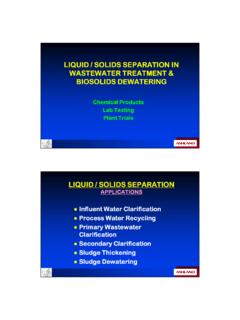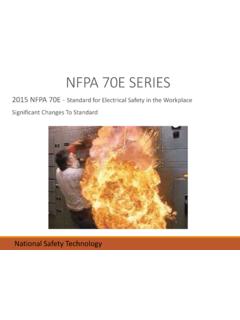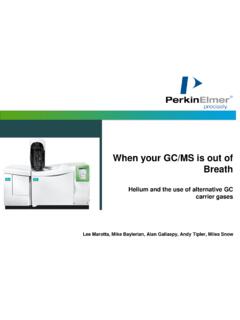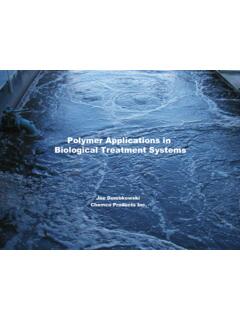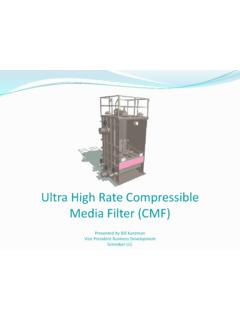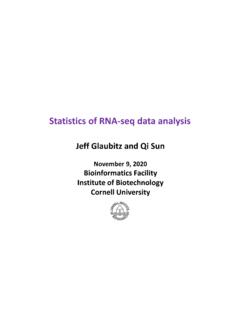Transcription of Procedure for Laboratory Jar Test
1 Procedure for Laboratory Jar Test The purpose of the Laboratory jar test is to select and quantify a treatment program for removal of suspended solids or oil from raw water or a dilute process or waste stream. Jar tests are conducted on a four- or six-place gang stirrer, which can be utilized to simulate mixing and settling conditions in a clarifier. Jars (beakers) with different treatment programs or the same product at different dosages are run side-by-side, and the results compared to an untreated jar, or one treated with the current program. The general Procedure for jar testing is as follows1: 1. Fill the appropriate number of (matched) 1000 mL square transparent jars2 with well-mixed test water, using a 1000 mL graduate. 2. Place the filled jars on the gang stirrer, with the paddles positioned identically in each beaker. 3. Mix the beakers at 40 50 rpm for 30 seconds. Discontinue mixing until polymer addition is completed. 4. Leave the first beaker as a blank1, and add increasing dosages of the first polymer to subsequent beakers.
2 Inject polymer solutions as quickly as possible, below the liquid level and about halfway between the stirrer shaft and beaker wall. 5. Increase the mixing speed to 100-125 rpm for 15-60 seconds (rapid mix).3,4. 6. Reduce the mixing to 40 rpm and continue the slow mix for twice the duration of the rapid mix. Note relative floc sizes. 7. Turn the mixer off and allow settling to occur. Note relative rates of settling. 8. After settling for a period of time (typically 10 or 15 min.), note supernatant appearance. If desired, the latter may be quantified using a turbidimeter or clarity wedge (for turbidity), or determined gravimetrically (for suspended solids). 9. Remove the jars from the gang stirrer, empty the contents and thoroughly clean the beakers. 10. Repeat the Procedure from Step 1, but substituting for the Blank the dosage selected as providing the desired level of performance in the first series of test. 1. If the currently used product is available, the first series of tests consists of a dosage curve of that product: test dosages are selected so as to bracket the plant dosage.
3 If the current program is unknown or samples are unavailable, or if there is no product in use, the first step is to determine an approximate minimum dosage of flocculant. This is accomplished by slowly stirring 100 or 200 mL of the substrate in a beaker and adding the polymer solution in 1 mL increments until flocculation begins to occur. This will be the starting dosage of jar testing. 2. It is preferable to used square jars or beakers to provide more turbulent mixing and insure good distribution of the polymer. (Square candy jars are available at Walmart, K-Mart, etc. Alternatively, use 1 liter plastic Laboratory bottles from which the tops have been cut off.). 3. Inorganic or organic coagulants may require longer rapid mix times, perhaps as much as 5 min. 4. Some plants , especially water prep facilities, have mixing regimes which they feel duplicate plant conditions. Mixing times may also be substantially greater in these plants . 1 Chemical Plant Road Box 250 Riceboro, GA 31323 USA Tel Fax Coagulation Study Potable or Process Waste Water Industrial Waste Water Company: _____ Date:_____.
4 DOSAGE (mg/L) Floc Test Floc Set- Super- No. Size tling natant Other COMMENTS. Rate Clarity Signed _____ Page No. _____ of _____ Pages Copies . Distribution : (1) Customer, (2) Business Management, (3) Tech Service, (4) Application Specialists.
